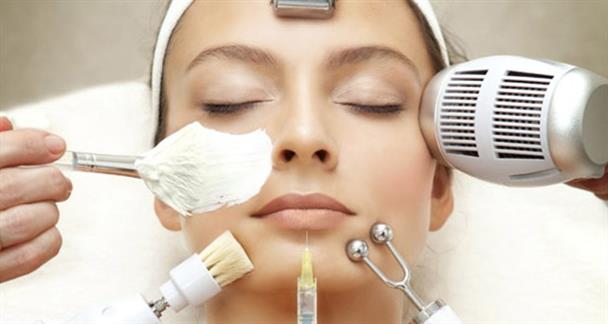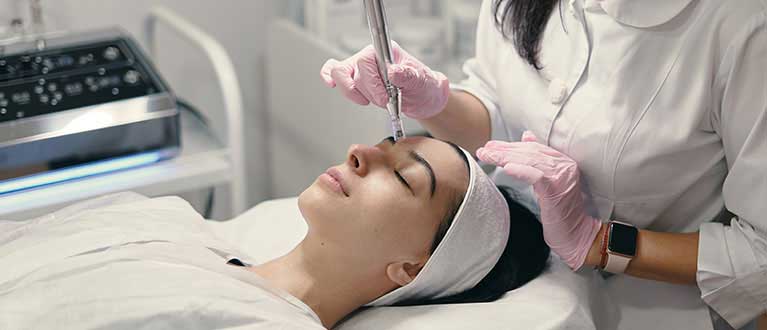Hair care has long been a subject of fascination and concern for many people. From hair loss treatments to hair growth products, there is a myriad of information available, but not all of it is reliable. The role of trichologists, professionals who specialize in the study of hair and scalp health, has become increasingly essential in debunking myths and providing accurate, science-backed advice. The Best Trichologists are key figures in ensuring individuals receive the correct guidance to address their hair and scalp concerns.
In this article, we will explore some of the most common myths about hair and scalp health that the trichologists consistently debunk. These myths can sometimes lead to ineffective treatments or misconceptions that could worsen hair and scalp conditions. It’s important to understand that hair care is not always as simple as many popular beliefs suggest. The following myths are ones that have been widely circulated but are often dismissed by the trichologists due to their lack of scientific evidence or understanding.
1. Frequent Shampooing Causes Hair Loss
One of the most persistent myths is the idea that washing your hair too often leads to hair loss. While it is true that over-shampooing can dry out the scalp and hair, leading to brittle strands, there is no direct link between frequent shampooing and hair loss. The trichologists emphasize the importance of keeping the scalp clean to remove dirt, oil, and product buildup, all of which can clog hair follicles and potentially impair hair growth.

The real issue lies in the type of shampoo used and how it affects the hair’s natural oils. Some shampoos contain harsh sulfates that strip hair of its natural moisture, leading to dryness and breakage. However, when using the right products suited to your hair type, shampooing regularly should not cause hair loss. In fact, keeping the scalp clean can prevent certain scalp conditions, such as dandruff and folliculitis, that may contribute to hair thinning.
2. Baldness is Inherited Only from the Mother’s Side
The myth that baldness is solely inherited from the mother’s side of the family is another misconception that is debunked by trichologists. While genetic factors play a significant role in hair loss, both maternal and paternal sides can contribute to male and female pattern baldness. This myth stems from the fact that the gene responsible for baldness is carried on the X chromosome, which men inherit from their mothers. However, there are multiple genes involved in hair loss, and both sides of the family can contribute to the likelihood of developing baldness.
The Trichologists understand that genetics are just one factor in hair loss. Environmental factors, hormonal imbalances, and lifestyle choices, such as diet and stress, can also influence the health of your hair and scalp. Thus, it’s important to consider a range of factors when assessing the causes of hair loss rather than blaming it solely on one side of the family.
3. Cutting Hair Makes It Grow Faster
Many people believe that cutting their hair regularly will cause it to grow faster. While regular trims are essential for maintaining the health of your hair, especially when it comes to preventing split ends, hair growth occurs from the scalp, not the tips of the hair. Hair growth is influenced by factors like genetics, nutrition, and hormones, not by how often you trim your hair.
Trichologists often explain that cutting hair does not affect the rate of growth but helps to maintain the length and overall appearance of the hair. Hair typically grows at a rate of about half an inch per month, regardless of how frequently it is cut. So, while trimming helps with managing split ends and maintaining healthy hair, it won’t significantly speed up the rate at which hair grows.
4. Using Heat Styling Tools Every Day Will Cause Permanent Damage
Heat styling tools, such as blow dryers, curling irons, and straighteners, have a reputation for causing permanent hair damage. While excessive heat can indeed lead to dryness and breakage, the idea that using heat styling tools will cause irreversible damage is a myth. The trichologists emphasize that damage from heat styling is largely preventable with proper precautions.
Using a heat protectant spray before styling can minimize the potential for damage. Additionally, maintaining a moderate temperature setting on styling tools and avoiding frequent use can help keep hair in good condition. If you use heat styling tools in moderation and properly care for your hair, it can remain healthy and strong without the risk of permanent damage.
5. Natural Hair Oils Are Always Beneficial for the Scalp
Natural oils, such as coconut oil, argan oil, and olive oil, are often touted as miracle workers for hair care. While these oils can provide benefits like added moisture and shine, they are not universally beneficial for every scalp type. The Trichologists understand that the effectiveness of natural oils depends on the individual’s hair type and scalp condition.
For example, individuals with oily or acne-prone skin may find that applying oils to their scalp exacerbates their issues, leading to clogged pores or increased oiliness. On the other hand, individuals with dry or damaged hair may find that oils help to restore moisture and improve texture. It’s essential to understand your scalp’s needs before applying oils to ensure you’re using the right products.
6. Hair Loss is Only a Concern for Men
Another prevalent myth is that hair loss is primarily a male issue. While it is true that male pattern baldness is more common, women can also experience hair thinning and loss due to a variety of factors, including hormonal changes, stress, nutritional deficiencies, and medical conditions. Female pattern hair loss can be just as distressing as male pattern baldness and can occur at any age.
The Trichologists are trained to help both men and women understand the underlying causes of their hair loss and recommend the most appropriate treatments. Understanding that hair loss is not exclusive to one gender can help individuals seek the appropriate help early, leading to more successful treatment outcomes.

7. Stress is the Only Cause of Hair Loss
While stress is undoubtedly a factor in many cases of hair loss, it is by no means the sole cause. Many people believe that hair loss is directly linked to stress, but the Trichologists emphasize that other factors, such as genetics, diet, illness, and hormonal imbalances, can play a more significant role in hair thinning and shedding.
A condition called telogen effluvium is often triggered by stress, leading to temporary hair shedding. However, it is important to understand that chronic hair loss is often the result of multiple factors, and simply attributing it to stress may delay the necessary treatment or intervention. A thorough consultation with a trichologist can help identify all contributing factors to the hair loss, allowing for a more comprehensive and effective treatment plan.
8. Hair Dye Causes Hair Loss
Many people believe that coloring their hair causes permanent hair loss. While frequent dyeing, especially with harsh chemicals, can cause damage to the hair shaft and lead to breakage, it does not directly cause hair loss from the scalp. Hair loss typically occurs when the hair follicle is damaged, not the hair itself.
Trichologists recommend using gentler hair dyes, avoiding excessive bleaching, and incorporating restorative treatments to minimize damage. While over-dyeing or using harsh chemicals can make hair appear thinner due to breakage, it is not the cause of hair loss from the roots. As long as the scalp remains healthy, hair loss due to dyeing can generally be avoided.
9. Shaving Your Head Will Make Your Hair Grow Back Thicker
Shaving your head does not affect the thickness of your hair growth. The common belief that shaving stimulates thicker hair growth is a myth. Shaving only cuts the hair at the surface, leaving the follicle and root untouched. The Trichologists explain that hair thickness is determined by genetics, and shaving has no impact on the size of the follicle or the density of hair growth.
While shaving can give the illusion of thicker hair due to the blunt edges of the hair shaft, it doesn’t change the structure of the hair itself. People often find that their hair feels softer and thicker after shaving simply because it is growing back from the root, but the actual thickness of the hair remains unchanged.
Conclusion
The myths surrounding hair and scalp health are numerous, and it can be difficult for individuals to separate fact from fiction. By debunking these common misconceptions, the Trichologists help people better understand how to care for their hair and scalp. With accurate, science-backed information, they empower individuals to make informed decisions about their hair care routines and treatments.
Ultimately, understanding the truth behind these myths is essential for maintaining healthy hair. Whether it’s through proper shampooing techniques, addressing underlying causes of hair loss, or using the right hair care products, having access to expert guidance is invaluable for achieving optimal results. Trusting the expertise of the trichologists can lead to better outcomes and a more accurate understanding of what truly affects the health of your hair and scalp.










